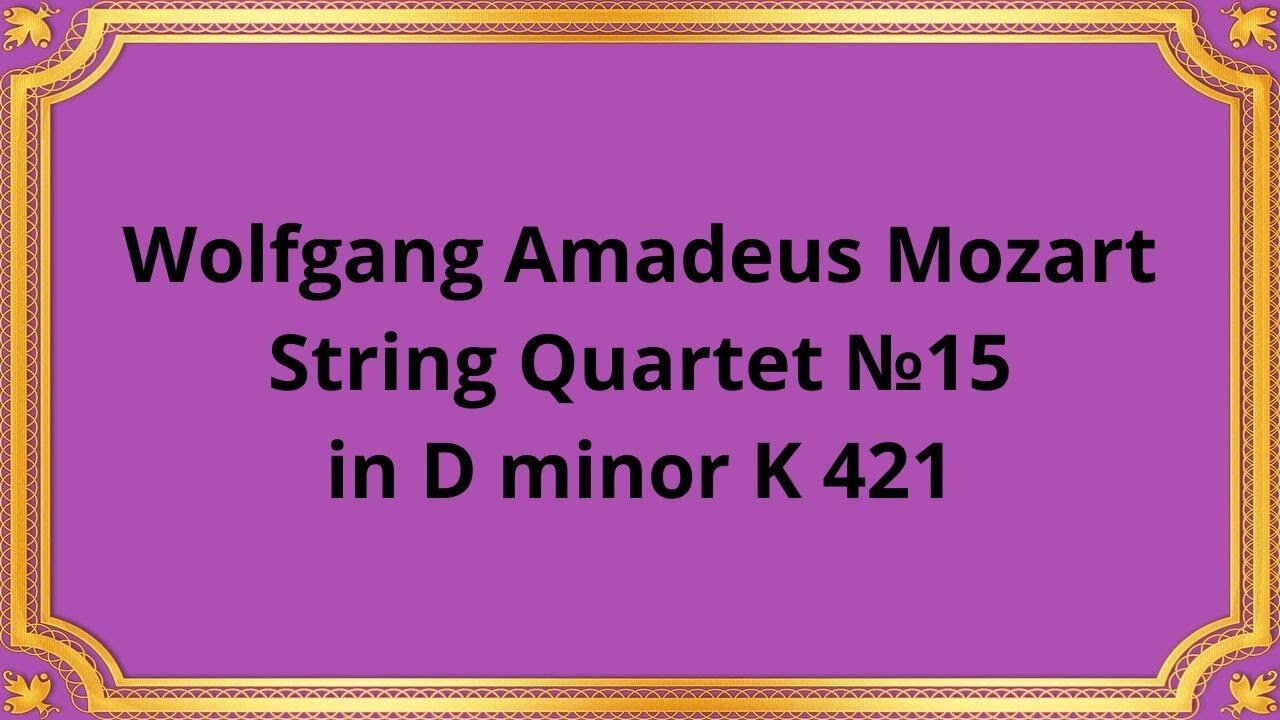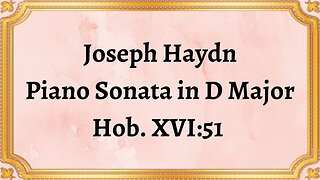Premium Only Content

Wolfgang Amadeus Mozart String Quartet №15 in D minor K 421
#Mozart#Chamber_music#Classical_music#String_Quartet#Musical_composition
Publication date 1940 г.
STRUB-QUARTETT [Max STRUB, Hermann HUBL, Hermann HIRSCHFELDER, Hans MÜNCH-HOLLAND]
Mozart's String Quartet No. 15 in D minor K 421 is a timeless masterpiece that has captivated audiences for centuries. Composed in 1783, this quartet is one of the six string quartets Mozart dedicated to his mentor, Joseph Haydn. It is widely regarded as one of the most significant works in the genre, showcasing Mozart's mastery of musical form and expression.
The quartet comprises four movements, each with its unique character and style. The first movement is marked "Allegro," and it begins with a solemn and dramatic introduction that sets the tone for the entire piece. It features a sonata form with a double exposition, a technique used by Mozart to give each instrument an opportunity to present the main theme. The second movement, marked "Andante," is a lyrical and expressive piece, characterized by its gentle melodies and poignant harmonies. The third movement, marked "Menuetto," is a lively dance-like piece that features a contrasting trio section. The final movement, marked "Allegretto ma non troppo," is a fast-paced and energetic piece that brings the quartet to a thrilling conclusion.
Mozart's use of harmony and melody in this quartet is particularly striking. The piece is written in a minor key, which gives it a dark and brooding character. Mozart explores a wide range of harmonies, from dissonant and tense to consonant and soothing. The melodies in the quartet are equally diverse, ranging from simple and beautiful to complex and intricate.
One of the technical innovations of this quartet is Mozart's use of the cello as a solo instrument. In the second movement, the cello plays a beautiful and intricate melody that is both expressive and technically challenging. Mozart also employs new techniques in the quartet, such as the use of syncopation and abrupt changes in dynamics, which give the piece a sense of unpredictability and excitement.
Mozart's String Quartet No. 15 in D minor K 421 has had a profound influence on the development of the string quartet genre. Its technical innovations and expressive power have inspired generations of composers, from Beethoven to Shostakovich. The quartet remains a popular and frequently performed work to this day, a testament to Mozart's enduring legacy as one of the greatest composers in history.
Conclusion:
Mozart's String Quartet No. 15 in D minor K 421 is a masterpiece of musical composition, showcasing Mozart's unparalleled skill and creativity. Its complex harmonies, intricate melodies, and technical innovations have made it a favorite of audiences and musicians alike. As a cornerstone of the string quartet genre, the quartet remains a vital and influential work in the classical music canon, continuing to inspire and move audiences over two centuries after its creation.
-
 6:07
6:07
Classical music_Music Inspiration
11 days agoJoseph Haydn Piano Sonata in D Major, Hob. XVI:51
401 -
 24:46
24:46
Cooking with Gruel
1 day agoFeeding Hope - LA Wildfire Relief from the People
7.79K7 -
 14:34
14:34
MichaelBisping
11 hours agoSean Strickland CONFRONTS Bisping! 'Pereira in Corner, Dricus and Khamzat!' (EXCLUSIVE INTERVIEW)
5.36K2 -
 59:54
59:54
Trumpet Daily
18 hours ago $3.27 earnedThe Trade War Ends - Trumpet Daily | Feb. 4, 2025
4.14K10 -
 5:44
5:44
DropItLikeItsScott
11 hours ago $0.06 earnedA Must Have Shotgun - GARAYSAR Fear 116
9272 -
 56:14
56:14
PMG
17 hours ago $0.06 earnedHannah Faulkner and John Strand | BLANKET PARDON FOR ALL J6er's
1.61K2 -
 48:51
48:51
State of the Second Podcast
14 hours agoWhy Does Palmetto State Armory Keep Winning?
8.9K2 -
 32:01
32:01
SB Mowing
25 days agoHer Tears Said It All: “My Prayers Have Been Answered”
25.6K35 -
 3:28:55
3:28:55
Price of Reason
14 hours agoTrump Means Business! Disney's F4 Hail Mary Pass! Assassin's Creed Shadows Art Book SUCKS?
69.1K14 -
 8:00:07
8:00:07
SpartakusLIVE
12 hours ago#1 Shadow BANNED Hero
37.6K